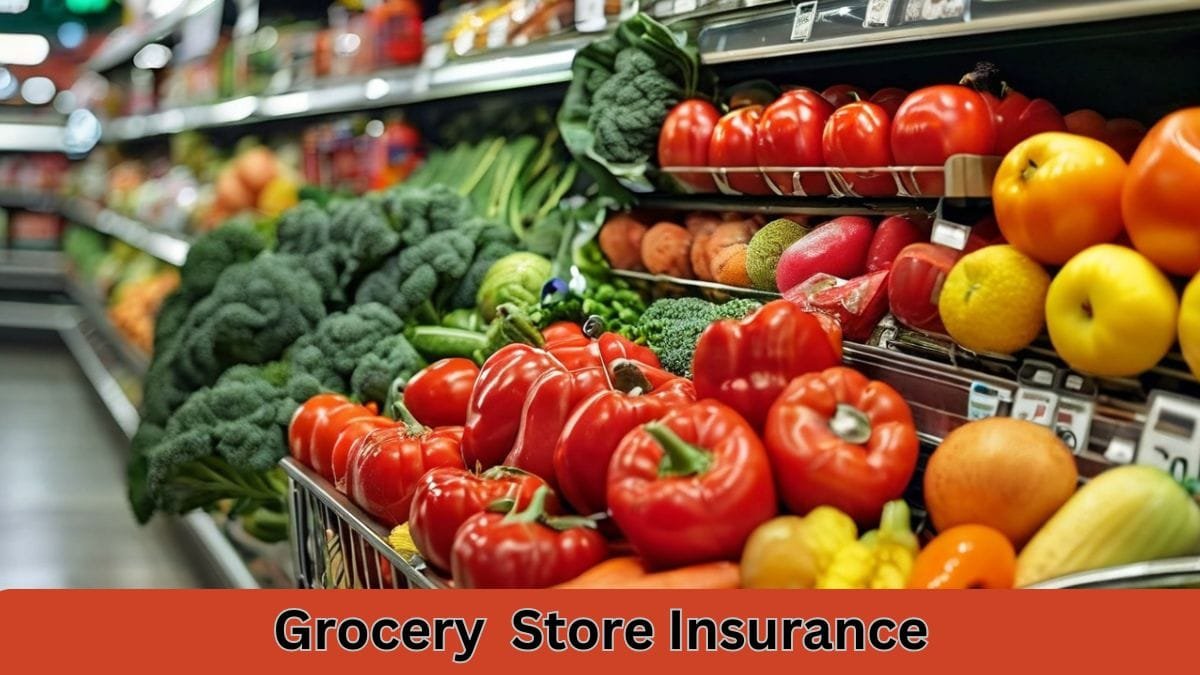BUSINESS
Traceloans: The Ultimate Tool for Simplifying Your Loan Management

In today’s fast-paced world, managing multiple loans can become a daunting task. Whether you’re juggling student traceloans, a mortgage, or business financing, keeping track of all your payments, interest rates, and due dates is no easy feat. This is where financial tools like Traceloans come into play, helping you streamline your loan management process. In this article, we’ll dive deep into what Traceloans is, how it works, and why it’s an essential tool for anyone dealing with loans.
What is Traceloans?
Traceloans is a modern financial tool designed to help users efficiently track and manage their loans. Its primary purpose is to simplify the complex process of loan management by offering a centralized platform where you can view, organize, and keep tabs on all your loans in one place.
Key Features of Traceloans
- Comprehensive Loan Tracking: View all your loans, including balances, payment schedules, and interest rates, in a single dashboard.
- Custom Alerts: Set up notifications for upcoming due dates, changes in interest rates, or missed payments.
- Detailed Analytics: Access insights into your loan repayment progress, helping you make informed financial decisions.
How Traceloans Works
Traceloans offers an intuitive process that makes loan tracking easy and accessible for everyone.
Step-by-Step Process of Using Traceloans
- Sign Up: Start by creating an account on the Traceloans platform.
- Input Loan Details: Enter information about each of your loans, such as the lender, amount, interest rate, and payment schedule.
- Monitor Your Dashboard: Once your loans are added, the dashboard provides a real-time overview of your financial obligations.
- Set Up Alerts: Customize notifications to ensure you never miss a payment or a rate change.
User Interface and Experience
Traceloans is designed with the user in mind, offering a clean and easy-to-navigate interface. Even if you’re not tech-savvy, you’ll find the platform straightforward, making loan management less stressful.
Blogginglass
Benefits of Using Traceloans
Why should you consider using Traceloans? Here are some compelling reasons:
Easy Loan Tracking
Managing multiple loans can get confusing, but Traceloans keeps everything in one place, making it easier to track balances, payments, and interest rates.
Financial Planning Made Simple
With detailed analytics, Traceloans helps you understand your loan situation better, allowing you to plan your finances more effectively.
Real-Time Updates and Notifications
Stay informed with real-time updates about your loans, including due dates and any changes in terms or interest rates.
Who Can Benefit from Traceloans?
Traceloans isn’t just for individuals; it’s also a valuable tool for businesses and financial advisors.
Ideal Users: Individuals, Businesses, Financial Advisors
- Individuals: Track personal loans, mortgages, and credit card debts with ease.
- Businesses: Manage business loans and lines of credit efficiently.
- Financial Advisors: Help clients stay on top of their loan commitments.
Case Studies or Examples
Consider John, a small business owner with multiple loans. Before Traceloans, he struggled to keep track of his payments, often missing due dates. After using Traceloans, John now has a clear overview of his financial obligations, saving him both time and money.
Traceloans vs. Traditional Loan Management Methods
When comparing Traceloans to traditional methods of loan management, the advantages are clear.
Comparison with Manual Tracking
Manual tracking with spreadsheets or notebooks can lead to errors and missed payments. Traceloans automates the process, reducing the risk of mistakes.
Advantages Over Other Digital Tools
While there are other loan management tools available, Traceloans stands out due to its user-friendly interface, comprehensive features, and real-time updates.
Getting Started with Traceloans
Ready to simplify your loan management? Here’s how you can get started with Traceloans.
Sign-Up Process
Creating an account is quick and easy. Simply visit the Traceloans website, enter your details, and you’re ready to go.
Setting Up Your Account
Once you’ve signed up, the next step is to add your loan information. Traceloan’s will guide you through the process, ensuring you don’t miss any critical details.
Customizing Your Dashboard
Tailor your dashboard to meet your specific needs. Whether you want to focus on payment due dates, interest rates, or loan balances, Traceloan’s lets you customize your view.
Understanding the Traceloans Dashboard
The dashboard is the heart of Traceloan’s, offering a snapshot of your financial health.
Key Metrics and Information Displayed
- Loan Balances: See how much you owe across all your loans.
- Payment History: Track your past payments and upcoming due dates.
- Interest Rates: Monitor your interest rates to ensure you’re getting the best deal.
How to Navigate the Dashboard
Navigating the dashboard is simple. Each section is clearly labeled, and you can easily switch between different views to get the information you need.
Security and Privacy in Traceloans
In today’s digital age, security and privacy are paramount. Traceloan’s takes these concerns seriously.
Data Protection Measures
Traceloan’s employs robust encryption methods to protect your data, ensuring that your loan information remains secure.
User Privacy Assurance
Your privacy is a top priority for Traceloan’s. The platform adheres to strict privacy policies to ensure your data isn’t shared without your consent.
Common Challenges and How Traceloans Addresses Them
Loan management comes with its own set of challenges, but Traceloan’s is designed to tackle them head-on.
Overcoming Loan Tracking Difficulties
Traceloan’s simplifies loan tracking, making it easy to stay on top of multiple loans.
Managing Multiple Loans Effectively
With Traceloan’s, managing multiple loans becomes less overwhelming. The platform’s consolidated view ensures you never lose track of a loan again.
Traceloans Pricing and Plans
Traceloan’s offers flexible pricing to suit different needs.
Free vs. Paid Versions
While Traceloan’s offers a free version, premium features are available with a paid subscription.
What’s Included in Each Plan
The free version includes basic loan tracking, while the paid version offers advanced features like custom alerts and detailed analytics.
Customer Support and Resources
Should you need assistance, Traceloans provides excellent customer support.
How to Get Help When Needed
Support is available via email, phone, or live chat. The team is responsive and ready to assist with any issues you encounter.
Learning Resources and Tutorials
Traceloan’s also offers a range of tutorials and resources to help you make the most of the platform.
User Reviews and Testimonials
Don’t just take our word for it—here’s what users are saying about Traceloan’s.
What Users Are Saying About Traceloans
Users praise Traceloan’s for its ease of use, comprehensive features, and excellent customer support.
Success Stories
Many users have shared their success stories, highlighting how Traceloans has helped them better manage their finances.
Future of Traceloans
As technology evolves, so does Traceloan’s.
Upcoming Features and Updates
Traceloan’s is continually improving, with new features and updates on the horizon.
How Traceloans is Evolving with Technology
Traceloan’s is committed to staying at the forefront of financial technology, ensuring that users have access to the best tools available.
Conclusion
In conclusion, Traceloan’s is an invaluable tool for anyone looking to simplify their loan management process. With its user-friendly interface, comprehensive features, and robust security measures, Traceloans stands out as a top choice for individuals, businesses, and financial advisors alike. Whether you’re managing one loan or multiple, Traceloans can help you stay on track and make informed financial decisions.
FAQs
1. What is Traceloan’s?
Traceloan’s is a financial tool that helps users track and manage their loans in one centralized platform.
2. How secure is Traceloan’s?
Traceloan’s uses advanced encryption to ensure your data is protected, and it follows strict privacy policies.
3. Can businesses use Traceloan’s?
Yes, Traceloan’s is ideal for businesses looking to manage multiple loans and lines of credit efficiently.
4. Is Traceloan’s free to use?
Traceloan’s offers a free version, with premium features available through a paid subscription.
5. What makes Traceloan’s different from other loan management tools?
Traceloan’s stands out due to its user-friendly interface, comprehensive tracking features, and real-time updates.
BUSINESS
Oil Transfer Pump: A Comprehensive Guide to Understanding Its Importance, Types, and Applications
BUSINESS
peak auto auction: A Comprehensive Guide to Understanding the Industry Leader
BUSINESS
Grocery Store Insurance: Protecting Your Business and Your Customers

Running a grocery store is a complex and often unpredictable endeavor. Whether you’re an independent shop or part of a larger chain, you face a range of risks that can impact your business. These risks can come in many forms, from accidents on the premises to damage caused by natural disasters or even cyberattacks. Grocery store insurance is an essential investment to safeguard your business, your employees, and your customers. In this article, we’ll explore why grocery store insurance is necessary, the types of coverage you should consider, and how to find the right policy for your needs.
The Importance of Grocery Store Insurance
Grocery stores are exposed to a wide variety of risks that can disrupt operations and lead to significant financial losses. A single incident, such as a slip-and-fall accident in the aisles or damage to your inventory from a fire, can be costly without the proper insurance coverage.
Moreover, grocery stores often serve as an essential part of the community, providing customers with daily necessities. A business interruption—whether from a natural disaster, equipment failure, or a major liability claim—could have a profound impact on your ability to provide these essential services.
Insurance helps mitigate these risks, ensuring that your business remains financially stable and can recover from unforeseen events. Without the right insurance, a major incident could potentially lead to bankruptcy. Thus, grocery store insurance isn’t just a safety net; it’s a necessary tool for long-term sustainability.
Common Risks Faced by Grocery Stores
Understanding the risks your grocery store faces is the first step in determining the right insurance coverage. Here are some of the most common risks that grocery stores deal with:
Slip-and-Fall Accidents:
The nature of a grocery store’s layout and the high volume of customers means that the risk of slips, trips, and falls is significant. Wet floors, spilled liquids, uneven flooring, and obstructions can all lead to accidents that result in injuries.
Product Liability:
Grocery stores carry a variety of products, including food items, cleaning supplies, and pharmaceuticals. If a customer is injured or becomes ill from consuming or using a product sold in your store, you could be held liable for damages.
Property Damage:
Fires, floods, and other natural disasters can cause significant damage to your store’s physical location, inventory, and equipment. Property damage can result in costly repairs, loss of inventory, and a halt in operations while repairs are made.
Theft and Vandalism:
Grocery stores are often targeted by thieves, and the risk of theft is higher than many other types of businesses due to the high volume of goods and foot traffic. Whether it’s shoplifting, employee theft, or damage from vandalism, these incidents can be financially damaging.
Business Interruption:
If your store is forced to close due to damage, illness, or any other issue, your ability to generate income can be severely impacted. Business interruption insurance helps cover lost revenue during downtime.
Cybersecurity Risks:
With the growing reliance on digital systems for sales, inventory tracking, and customer data management, grocery stores are increasingly vulnerable to cyberattacks. A breach could lead to data theft or service disruptions.
Types of Insurance for Grocery Stores
Grocery store insurance isn’t a one-size-fits-all solution. The right coverage for your store depends on factors like your store’s size, location, and the types of products you sell. Here are some of the most important types of insurance coverage for grocery store owners:
General Liability Insurance
General liability insurance is one of the most essential types of coverage for any business, including grocery stores. It protects your business from third-party claims for bodily injury or property damage that occur on your premises or as a result of your business operations.
For example, if a customer slips on a wet floor and breaks their arm, general liability insurance would cover their medical expenses and any legal fees if they decide to sue. It also protects you against claims arising from product defects or faulty services that cause harm.
Product Liability Insurance
As a grocery store, you carry a wide variety of products that could potentially cause harm to your customers. Whether it’s food contamination, allergic reactions, or improper labeling, product liability insurance protects your business from claims related to the products you sell.
If a customer consumes a product that makes them sick or causes an allergic reaction, this insurance will help cover the costs of medical treatment and legal fees. It’s especially crucial for stores that sell perishable goods, imported items, or health-related products.
Property Insurance
Property insurance covers physical damage to your store’s building and the contents inside. This can include damage to your building from fire, flooding, vandalism, or other natural disasters. It also protects your inventory, equipment, and fixtures.
If your store’s refrigerators break down and cause food spoilage, property insurance can help cover the loss of goods. Similarly, if a fire damages your store or a flood ruins your inventory, property insurance would help cover the cost of repairs and replacements.
Workers’ Compensation Insurance
As an employer, you are legally required to provide workers’ compensation insurance to your employees. This insurance provides coverage for medical expenses, lost wages, and rehabilitation costs for workers who are injured on the job.
Grocery stores are busy, high-traffic environments, which means employees face a higher risk of injury. Whether it’s lifting heavy boxes, handling machinery, or working with slippery floors, workers’ compensation ensures that employees who get hurt on the job are compensated and can recover without bearing the financial burden.
Business Interruption Insurance
Business interruption insurance, also known as business income insurance, covers lost income if your grocery store has to temporarily close due to an event like a fire, storm, or other covered loss. This coverage is essential if your store’s closure leads to a significant loss of income.
For example, if a storm damages your store, business interruption insurance can help cover the cost of lost sales and ongoing expenses (such as rent or utilities) while you rebuild or recover. This can make the difference between staying afloat and going out of business.
Commercial Auto Insurance
If your grocery store uses vehicles for deliveries or transporting goods, commercial auto insurance is necessary. This insurance covers vehicles owned or operated by your business, including trucks, vans, or any other commercial vehicles.
Whether your store owns a fleet of delivery vehicles or uses personal vehicles for business purposes, commercial auto insurance protects against accidents, theft, or damage involving your vehicles.
Cyber Liability Insurance
In today’s digital age, grocery stores that accept online orders, store customer information, or rely on technology for inventory management are vulnerable to cyberattacks. Cyber liability insurance helps protect your business from the costs associated with data breaches, hacking, or other cyber incidents.
This insurance can cover expenses related to notifying customers about data breaches, restoring stolen data, and dealing with legal fees or lawsuits from affected customers.
How to Choose the Right Insurance for Your Grocery Store
When selecting insurance for your grocery store, it’s essential to assess your risks, business size, and coverage needs. Here are some steps to help guide you:
Evaluate Your Risks:
Identify the specific risks your grocery store faces. Do you have a lot of foot traffic? Are you located in a flood-prone area? Do you sell high-risk products like fresh seafood or alcohol? Understanding your risks will help you determine the right coverage.
Consult with an Insurance Broker:
A broker can help you navigate the complex world of insurance and find the policies that best meet your needs. They can also help you bundle policies for discounts and create a comprehensive insurance package.
Compare Multiple Quotes:
Different insurers offer different rates and levels of coverage. Take the time to compare quotes from several providers to ensure you’re getting the best value for your money.
Review Your Policy Regularly:
Your grocery store’s needs may change over time. Be sure to review your insurance policy annually to make sure you’re still adequately covered as your business grows or evolves.
Conclusion
Grocery store insurance is essential to protect your business from a range of risks, including accidents, property damage, theft, and liability claims. By investing in the right coverage, you can safeguard your store, your employees, and your customers, ensuring that your business remains resilient and able to recover from any unforeseen challenges. With the right policies in place, you can focus on growing your business and serving your community with confidence.
FAQs
Why do grocery stores need insurance?
Grocery stores face a wide range of risks, including property damage, theft, slip-and-fall accidents, product liability claims, and business interruption due to unforeseen events. Insurance helps mitigate these risks, ensuring that your store is financially protected in the event of an accident or disaster. Without insurance, the financial impact of an incident could be devastating to your business, leading to significant loss, legal complications, or even bankruptcy.
What types of insurance do grocery stores typically need?
A grocery store typically needs several types of insurance to cover its various risks, including:
General Liability Insurance:
Protects against third-party claims for bodily injury or property damage on your premises.
Product Liability Insurance:
Covers claims related to illnesses or injuries caused by products sold in your store.
Property Insurance:
Covers damage to your store, inventory, equipment, and physical assets due to fire, flooding, theft, or other incidents.
Workers’ Compensation Insurance:
Provides coverage for employee injuries on the job, including medical expenses and lost wages.
Business Interruption Insurance:
Helps cover lost income and ongoing expenses if your store needs to temporarily close due to a covered incident.
Commercial Auto Insurance:
If your store operates delivery vehicles, this covers vehicle accidents and damage.
Cyber Liability Insurance:
Protects against data breaches and cyberattacks, which can result in stolen customer data or system outages.
Do I need product liability insurance if I don’t sell food?
Yes. While grocery stores are commonly associated with selling food, product liability insurance is necessary regardless of the type of products you sell. This type of insurance protects your business if a customer is injured or harmed by any of the products you carry, whether it’s food, cleaning products, health items, or other consumer goods. For example, if a cleaning product you sell causes harm to a customer, product liability insurance can help cover medical expenses and legal fees.
How much does grocery store insurance cost?
The cost of grocery store insurance depends on several factors, including:
The size and location of your store.
The types of products you sell (perishable goods, alcohol, etc.).
The number of employees you have.
Your store’s annual revenue and risk profile.
The amount of coverage you need and the policy limits.
On average, grocery store insurance can range from a few hundred to several thousand dollars per year. For a small, independent grocery store, you might pay between $500 and $2,000 annually for basic coverage. However, larger stores or those with higher risk factors may pay more.
It’s important to shop around for quotes and consult with an insurance broker to get a customized estimate based on your specific needs.
Is workers’ compensation insurance required for grocery stores?
Yes, in most states, workers’ compensation insurance is a legal requirement for businesses with employees. This insurance covers medical expenses and lost wages for employees who are injured on the job. In the case of a grocery store, employees are at risk of injuries related to lifting heavy items, slips and falls, or accidents with machinery (like forklifts or pallet jacks). Failure to carry workers’ compensation insurance could result in significant legal and financial penalties.
- FASHION7 years ago
These ’90s fashion trends are making a comeback in 2017
- ENTERTAINMENT7 years ago
The final 6 ‘Game of Thrones’ episodes might feel like a full season
- FASHION7 years ago
According to Dior Couture, this taboo fashion accessory is back
- ENTERTAINMENT7 years ago
The old and New Edition cast comes together to perform
- Sports7 years ago
Phillies’ Aaron Altherr makes mind-boggling barehanded play
- BUSINESS7 years ago
Uber and Lyft are finally available in all of New York State
- ENTERTAINMENT7 years ago
Disney’s live-action Aladdin finally finds its stars
- Sports7 years ago
Steph Curry finally got the contract he deserves from the Warriors








